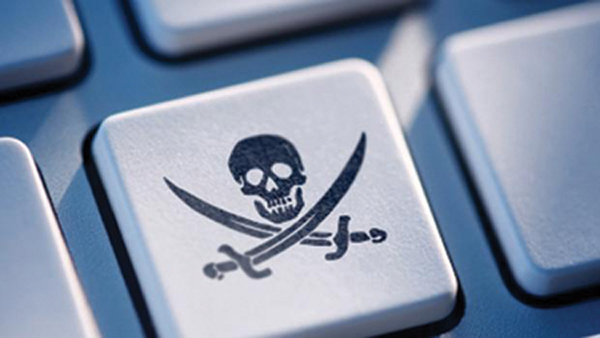
PEER-TO-PEER FILE SHARING HAS ALLOWED COPYRIGHT INFRINGEMENT to become so commonplace that enforcement of the law is nearly impossible. Lawmakers and the recording industry have tried several methods to enforce the law (multimillion dollar suits against individual users, SOPA, PIPA, etc), but all have failed in their estimated outcome. The Copyright Alert System is the newest brought not by lawmakers, but by the industry. As a content creator, copyright holder, and music consumer, this system could be relevant to your bottom line. Here’s what you should know:
What Is It? The “Copyright Alert System” will monitor peer-to-peer file sharing services for copyright infringement and educate users who are participating – knowingly or unknowingly – in infringing activities. A system will monitor networks, collect IP addresses where suspected infringement is occurring and submit the addresses to Internet Service Providers who will issue “alerts” to the infringer. Because IP addresses are easily identifiable (and are likely to present themselves during file sharing), it is a relatively easy practice to monitor.
Why Was It Established? Effective laws and regulations promote or discourage certain behaviors, often instilling penalties of jail time or money damages for violations. The United States copyright laws, which promote creation of the arts through protection of content, provide statutory damages (up to $150,000) and jail time (in rare circumstances) for those who infringe upon copyrighted work. However, these laws have been relatively ineffective in monitoring the Wild West of the web; therefore, the industry (along with tech companies) has taken it upon itself to create a solution. The Copyright Alert System differs from SOPA and PIPA and other anti-piracy proposals in that it is not a legislative solution to copyright infringement. CAS was launched by the Center for Copyright Information and includes participation by many of the Internet’s largest companies, including AT&T, Cablevision Systems, Comcast, Time Warner Cable and Verizon. A “Memorandum of Understanding” was entered into between the participants (essentially, a rule book that everyone has agreed to), which lays the foundation for creating the CAS:
“A reasonable, alert-based approach may help to protect legal rights granted by copyright and stem the unlawful distribution of copyrighted works, while providing education, privacy protection, fair warning and an opportunity for review that protects the lawful interests of consumers. The efficiencies gained from such a cooperative model may benefit all interested parties, including consumers.”
How Does it Work?
The CAS provides a less punitive, more educational system that hopes to deter and educate casual infringers from how they use copyrighted materials. The Center for Copyright Information provides a general overview for how the program will work:
“Content owners (represented by MPAA and RIAA) will notify a participating ISP when they believe their copyrights are being misused online by a specific computer (identified by its IP address which indicates the connection to the Internet). The ISP will determine which of its subscriber accounts was allocated by the specified IP address at the applicable date and time and then send an alert to the subscriber whose account has been identified.”
There are six alerts that a potential infringer could be served with:
Alert #1: The subscriber will be notified by the ISP that their account may have been involved in copyright infringement. The message will direct the subscriber to educational resources to help check their computer/network security, provide steps to avoid further infringement, and give sites for legal sources of media content.
Alert #2: If the subscriber continues to infringe after the first alert, they will receive another alert detailing their use and providing education on infringement.
Alert #3: If the illegal activity continues, the subscriber will be provided with a message requiring the user to acknowledge receipt, designed to confirm the subscriber’s awareness of the infringement alert and prior educational alerts.
Alert #4: Like the prior alert, if the subscriber’s account again appears to have been used for copyright infringement, the subscriber will be provided with a message requiring the user to acknowledge receipt.
Alert #5: If a subscriber continues to share or download copyrighted materials, the ISP has several steps available to prevent future copyright infringement, called “Mitigation Measures.” This is where subscribers may actually care, because such measure may include: reductions of Internet speeds or redirection to a landing page until the subscriber contacts the ISP.
Alert #6: If the subscriber’s infringement persists, the ISP will send another alert and may implement another Mitigation Measure.
How Does It Affect You? Education is key to understanding copyright infringement. To that end, the Copyright Alert System is a laudable effort in providing users with tools to understand infringement. However, the system provides no actual penalty to continued infringement. There have been rumors that the ISPs may eliminate service altogether for repeat file-sharing offenders, however nowhere in the plan do they directly call for such drastic measures.
For more information on the Copyright Alert System, visit www.copyrightinformation.org.
Adam Barnosky is a Boston-based attorney and writer. For music industry news, entertainment law updates, or to suggest an upcoming Legal Pad topic, find him on Twitter @adambarnosky.
Disclaimer: The information contained in this column is general legal information only. Consult your attorney for all specific considerations.
